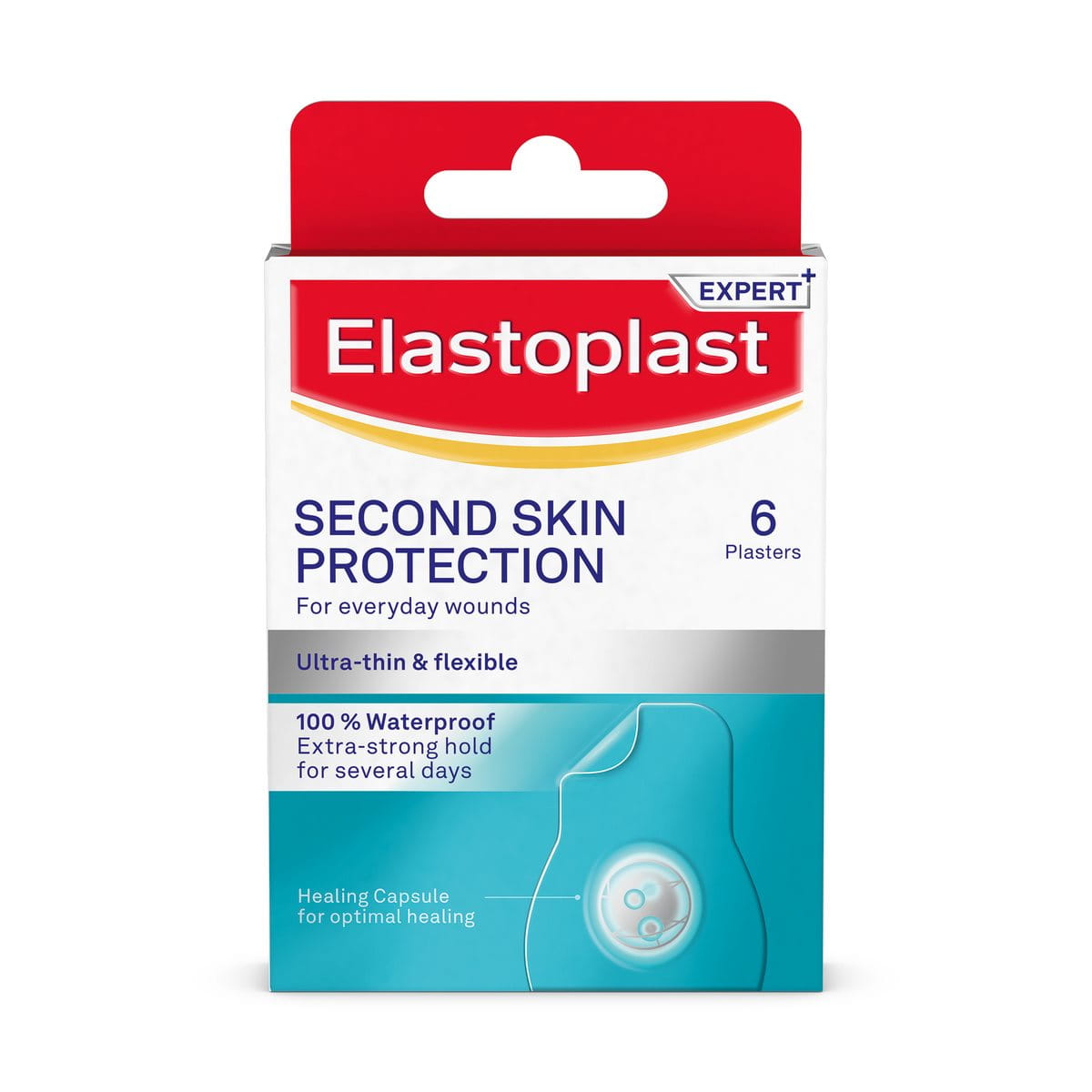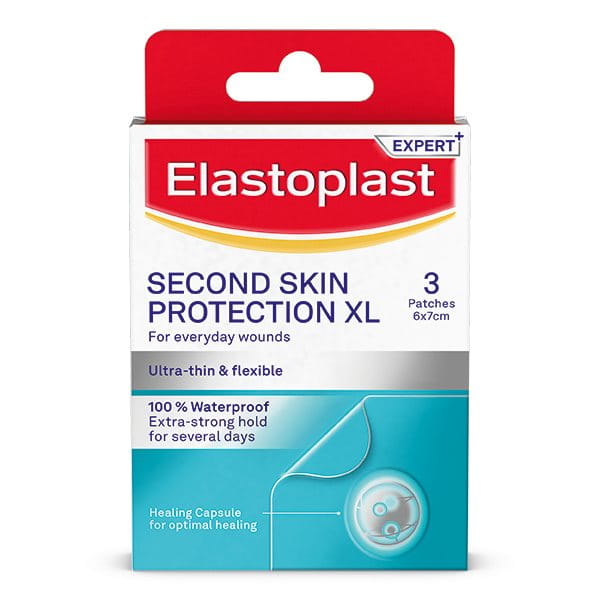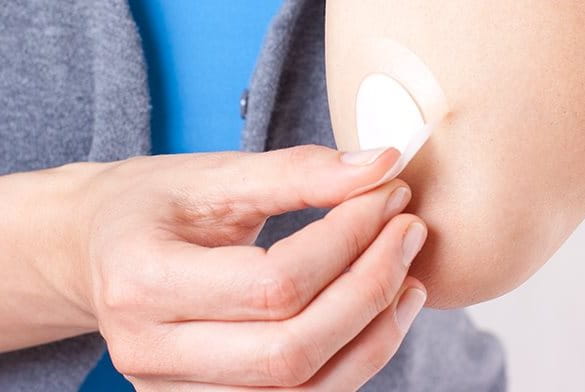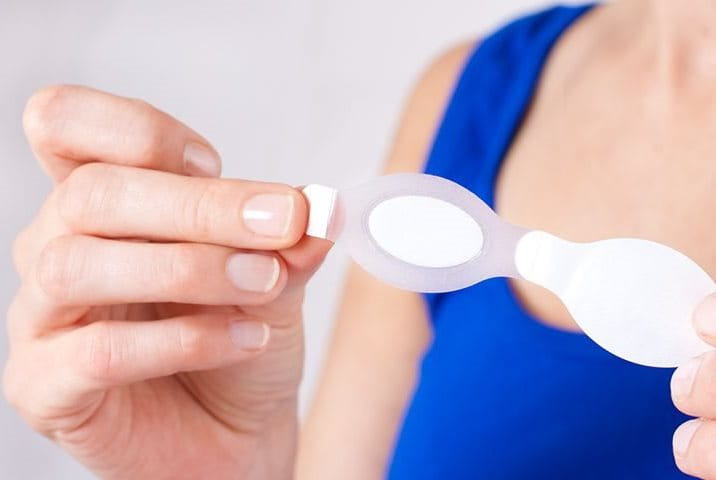Dressings are a crucial part of the wound healing process. By covering scrapes, cuts, or burns, plasters also enhance healing and help prevent wound infection and scarring. However, there is a large variety of plaster types, so you may be wondering which one to use. Choosing the right plaster for the right wound is important, so read on to learn more about how hydrocolloid dressings work, such as the Elastoplast Second Skin Protection Advanced Plasters.
What are hydrocolloid dressings?
Hydrocolloid dressings are plasters made from materials like gelatine, pectin, and carboxymethylcellulose.
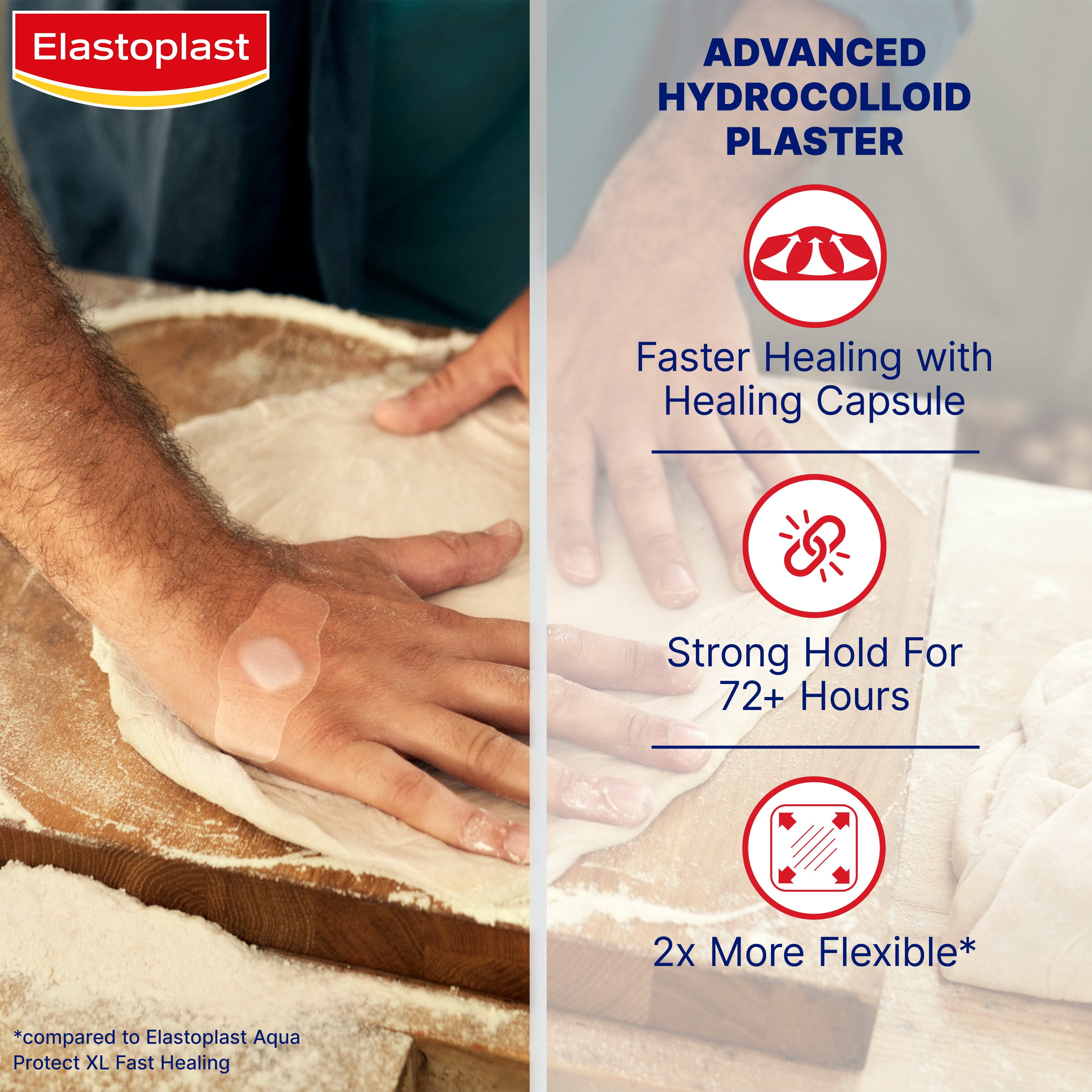
Hydrocolloid dressings have two layers:
- The inner hydrocolloid adhesive layer - has particles that absorb exudate to form a hydrated gel over the wound. In this way, they formulate a moist environment around the wound promoting healing and protecting the new tissues.
- The outer layer (film) - forms a seal to protect the wound from bacterial contamination and foreign debris. This layer also enables a moist environment and helps prevent shearing.
Some benefits of hydrocolloid dressings are the fact that they don’t have to be changed as often, and they are easy to apply. They are also available in a variety of shapes, come with an adhesive border and are designed for difficult-to-dress wound areas like heels and elbows.
Hydrocolloid dressings that act as a second skin
When injuries such as cuts and minor wounds occur, it’s important to keep the wound supported and protected from dirt and bacteria while it heals. Elastoplast Second Skin Protection Hydrocolloid Advanced Plaster provides protection and treatment for everyday wounds, with waterproof, discreet patches and a protective barrier that ensures a clean environment for faster healing.
The Second Skin Protection XL dressings are designed to provide protection and treatment for everyday wounds. Being XL sized, they offer greater coverage and can be used for larger wounds. Read more about what Second Skin Protection is and how hydrocolloid technology works here.
How to apply hydrocolloid dressings
Applying a hydrocolloid plaster involves a similar method to a standard plaster application. Follow the steps below for proper application of a hydrocolloid bandage:
- Firstly, wash your hands and put gloves on to reduce the risk of infection.
- Remove any previous dressings you had on the wound. It’s advised to change gloves at this stage and use a new pair. Learn how to remove a plaster without pain.
- Clean the wound with Elastoplast Wound Spray or saline and pat the wound dry with clean gauze.
- Check the size of the dressing and ensure it overlaps the edges of the wound by 3cm. If the dressing is too small, this can cause leakage. In contrast, if it’s too large it can cause maceration to the skin around the wound.
- Avoid overstretching the wound and do not apply excessive pressure during application, as this may cause breaks in the surrounding skin or skin trauma.
- Remove the backing from the dressing, fold the dressing in half, and apply it.
- Consider using adhesive tape if the hydrocolloid bandage does not have its own border.
Our hydrocolloid dressing uses innovative, easy-to-use technology that allows it to be applied quickly and without wrinkles, adding extra convenience when you are on the go.
How often should you change a hydrocolloid dressing?
A hydrocolloid dressing usually lasts between 3 to 7 days. A good indication to know when to change the dressing is by seeing how far it has come up from the edges of the wound. However, this is not standard. So if you wonder how long you should leave a hydrocolloid dressing on, you should check it’s at least 70% full of wound exudate. Learn how long you should keep a plaster on an injury.
You won’t necessarily need to clean the wound often because hydrocolloid dressings keep the wound moist and protected. When you notice the hydrocolloid patches turning white, that’s because the material absorbs the fluid from the wound. Read more about how to change a plaster.
How to remove a hydrocolloid dressing
Follow the below steps to safely remove a hydrocolloid plaster from the wound, without damaging the skin.
- Press down on the skin around the edges of the dressing and then lift up the adhesive.
- Keep lifting around the edges so all the adhesive is free from the skin.
- Carefully peel the dressing away from the wound in the direction of hair growth, ensuring you don’t touch the wound and slow the healing process.
- If a new dressing is required, reapply one by following the steps described above.
Learn more about removing plasters painlessly.
Are hydrocolloid dressings waterproof?
Hydrocolloid plasters and dressings also contain polyurethane, which is a plastic material that makes them waterproof.
Polyurethane foam has been used in dressings and has demonstrated high absorptive capability and reliable adhesion to the wound surface. Given the fact that the hydrocolloid dressings are waterproof and you can shower with them, so there is no need for a second dressing or frequent changes.
Our hydrocolloid dressings are extremely waterproof and sweatproof, offering a great option without the need to change a dressing after a shower or swimming.
Hydrocolloid dressings benefits
Hydrocolloid plasters and dressings have various benefits compared to other types of plasters. While they can be more expensive than other plasters, they last longer and do not need to be changed as often, which can save you money. Other benefits of hydrocolloid dressings include:
- Easy to apply to the wound surface
- Self-adherent
- Impervious to gases, water, bacteria, and other external factors that can cause infection or delay healing
- Minimal disruption to the healing process
- Reduced pain
- Create a moist wound environment that supports the formation of new tissue
- Available in a variety of shapes and sizes to cover different types of wounds
- Do not stick to the wound, enabling faster healing. The Elastoplast Second Skin Hydrocolloid Protection XL is designed for fast healing, strong adhesion, and quick application.
When to use hydrocolloid dressings
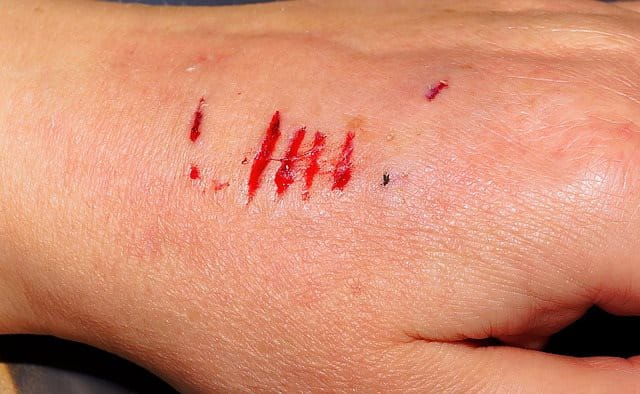
Hydrocolloid plasters are hydrating, and they can be used on surgical wounds, abrasions, minor burns, blisters and blood blisters. Due to their occlusive property, they can cover the nerve endings for thicker wounds and reduce pain. You can also use this plaster type for clean or uninfected wounds, and for medium-thickness wounds.
Important note - before you choose a hydrocolloid dressing you should assess the amount of exudate.
Hydrocolloid plasters can offer protection and healing to a variety of wounds in different settings, such as:
- Home: for minor burns, cuts and blisters that may occur around your home.
- At the gym: for relief and protection of blisters on the feet caused by new workout routines
- Offices: great for having as part of a medical first aid kit should any injuries occur
- Schools: useful to have in first aid kits
When not to use a hydrocolloid dressing
Hydrocolloid dressings are suitable for a variety of wounds, but not for every wound. They are absorbent to a point, so they must not be used for wounds with a big amount of exudate. Instead, they are ideal for partial to full-thickness wounds with low amounts of exudate. Exudate is a fluid that leaks out of blood vessels into nearby tissues.
Should you put hydrocolloid dressings on open wounds?
Hydrocolloid dressings should also not be used in wounds that need frequent inspection as it will be difficult to check the wound without removing the dressing. Avoid using them on infected wounds and wounds that need drainage too.
Please note that, although these were compiled with great care, the tips and advice given on this website by no means substitute medical advice and treatment. If you have or suspect a health problem, consult a doctor and follow medical advice regardless of what you have learned on this website.
Always read carefully and follow the instructions for use or the product leaflets. For further information about our products, please contact us via email at ConsumerRelationsUK@Beiersdorf.com.



